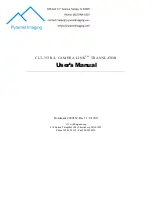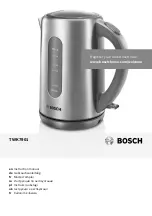
10-22
KDFX Reference
KDFX Algorithm Specifications
14 Grand Plate
A plate reverberation algorithm.
PAUs:
3
This algorithm emulates an EMT 140 steel plate reverberator. Plate reverberators were manufactured
during the 1950's, 1960's, 1970's, and perhaps into the 1980's. By the end of the 1980's, they had been
supplanted in the marketplace by digital reverbertors, which
fi
rst appeared in 1976. While a handful of
companies made plate reverberators, EMT (Germany) was the best known and most popular.
A plate reverberator is generally quite heavy and large, perhaps 4 feet high by 7 feet long and a foot thick.
They were only slightly adjustable, with controls for high frequency damping and decay time. Some were
stereo in, stereo out, others mono in, mono out.
A plate reverb begins with a sheet of plate steel suspended by its edges, leaving the plate free to vibrate. At
one (or two) points on the plate, an electromagnetic driver (sort of a small loudspeaker without a cone) is
arranged to couple the dry signal into the plate, sending out sound vibrations into the plate in all
directions. At one or two other locations, a pickup is placed, sort of like a dynamic microphone whose
diaphragm is the plate itself, to pick up the reverberation.
Since the sound waves travel very rapidly in steel (faster than they do in air), and since the dimensions of
the plate are not large, the sound quickly reaches the plate edges and re
fl
ects from them. This results in a
very rapid build up of the reverberation, essentially free of early re
fl
ections and with no distinguishable
gap before the onset of reverb.
Plates offered a wonderful sound of their own, easily distinguished from other reverberators in the pre-
digital reverb era, such as springs or actual "echo" chambers. Plates were bright and diffused (built up
echo density) rapidly. Curiously, when we listen to a vintage plate today, we
fi
nd that the much vaunted
brightness is nothing like what we can accomplish digitally; we actually have to deliberately reduce the
brightness of a plate emulation to match the sound of a real plate. Similarly, we
fi
nd that we must throttle
back on the low frequency content as well.
The algorithm developed for Grand Plate was carefully crafted for rapid diffusion, low coloration,
freedom from discrete early re
fl
ections, and "brightness." We also added some controls that were never
present in real plates: size, pre delay of up to 500ms, LF damping, low pass roll off, and bass roll off.
Furthermore, we allow a wider range of decay time adjustment than a conventional plate. Once the
algorithm was complete, we tuned it by presenting the original EMT reverb on one channel and the Grand
Plate emulation on the other. A lengthy and careful tuning of Grand Plate (tuning at the micro detail level
of each delay and gain in the algorithm) was carried out until the stereo spread of this reverb was matched
in all the time periods--early, middle, and late.
The heart of this reverb is the plate simulation network, with its two inputs and two outputs. It is a full
stereo reverberation network, which means that the left and right inputs get slightly different treatment in
the reverberator. This yields a richer, more natural stereo image from stereo sources. If you have a mono
source, assign it to both inputs for best results.
The incoming left source is passed through predelay, low pass (Lowpass), and bass shelf (Bass Gain)
blocks. The right source is treated similarly.
There are low pass
fi
lters (HF Damping) and high pass
fi
lters (LF Damping) embedded in the plate
simulation network to modify the decay times. The reverb network also accomodates the Room Size and
Decay Time controls.
An output mixer assembles dry and wet signals.
Summary of Contents for K2661
Page 18: ...2 4 LFOs LFO Shapes...
Page 34: ...3 16 DSP Algorithms...
Page 54: ...5 4 MIDI Note Numbers Note Numbers for Percussion Keymaps...
Page 72: ...7 10 System Exclusive Protocol K2661 System Exclusive Implementation...
Page 82: ...9 4 Upgrading Sample Memory Choosing and Installing a SIMM for K2661 Sample Memory...
Page 334: ...10 252 KDFX Reference KDFX Algorithm Specifications...
Page 340: ...11 6 Glossary...
Page 382: ...12 42 Triple Modular Processing Alphanumeric Buttonpad Entries for DSP Functions...
Page 392: ...B 6 SysEx Control of KDFX MSB and LSB...
Page 442: ...D 20 Contemporary ROM Block Objects Controller Assignments Contemporary ROM Block...
Page 490: ...H 12 General MIDI Standard Mode Controller Assignments...
Page 492: ...I 2 Live Mode Objects Live Mode Programs...
Page 498: ...K2661 Musician s Reference Index...
Page 500: ......
















































